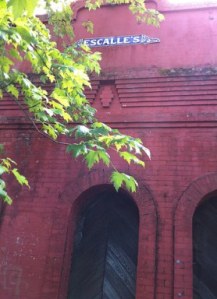Marin: Wealthy in Wine
Post by Chuck Hayward | June 13th, 2011
Major wine tastings usually follow one of two basic formats. One focuses on a single variety, as with ZAP or the upcoming Pinot Days. The other centers on geography, like those hosted by the Wines of Spain or the Sonoma County Vintners Association tasting to be held in San Francisco in July. The problem with some of these bigger geography-based events (the Sonoma tasting will cover 12 different subregions) is that there is so much to take in, everything runs together and wines start blending into each other.

- Marin County Wine Celebration: Small But Substantial
That was not the case with 7th Annual Marin County Wine Celebration—one of the more unique tastings I’ve had the fortune to attend. In order to raise funds for the Marin Agricultural Land Trust (MALT), an organization dedicated to preserving land for agricultural purposes in the county, an assortment of pinot noirs (and a rare white here and there) were poured by 14 wineries. Most were fairly new with a few pouring their first-ever efforts. To witness the gradual progress being made in this small growing region is truly exciting.

- Historic Escalle's Winery - 771 Magnolia in Larkspur, CA
While Marin County wines are newcomers to the current wine scene, the area itself boasts a significant history, largely forgotten until the latest plantings began to take root. Though it was very likely that Spanish settlers planted grapes when they founded the mission in San Rafael in the early 1800s, grape growing really gained momentum in the late 1800s. Back then, Escalle Winery, where the tasting was held in Larkspur, was a frequent tourist destination for San Franciscans on weekend getaways of wine drinking and picnics in the estate’s gardens. Other vineyards were located in San Rafael and Fairfax on hills along today's "Golden Mile."

- Devil's Gulch Ranch head honcho Mark Pasternak (R) with Chuck Hayward
Contemporary winemaking began in the early 1970s, when cabernet grapes were grown at Pacheco Ranch, located just off Highway 101. Philip Togni, then winemaker at Cuvasion Winery, discovered this fruit and fashioned a 1973/74 cabernet blend that became the wine in Marin County during its fern bar heyday. Later, Mark Pasternak would plant grapes at Devil's Gulch, Ranch, which was quickly gaining a reputation for farm-raised meats and vegetables. The first grapes ended up in sparkling wine made by Kalin Cellars and are now used by Schramsberg.
Marin County pinot noir did not enter the market until 1990 when Dan Goldfield (formerly of La Crema & Hartford Court, now Dutton Goldfield) began using Pasternak's fruit. It's safe to say that Marin County pinot noir would not be where it is today if not for that successful working relationship between Pasternak and Goldfield.
Since those early days, the increase in plantings has been slow but steady. Today, 200 acres of fruit in Marin County are planted in ten or so sites and used by some 20 producers who are currently producing pinot noir, though small amounts of chardonnay, cabernet and gewurztraminer are also made. Production is quite small, as the wines I tasted were made in amounts as low as 50 cases to no more than 700. Yet they were exciting, showing distinct and unique attributes and were surprisingly good values.
Stay tuned for the next post, where I will delve deeper into those wines.